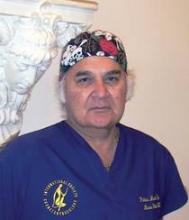Obstetrics and gynecology, under siege by diminishing reimbursement and escalating malpractice premiums, has broadly expanded its scope over recent years to include the cosmetic treatment of wrinkles, age spots, and love handles.
The trend has met with mild consternation voiced at medical meetings and in the commentary sections of professional journals, but little fervent pushback—with one notable exception: commercialization of cosmetic genital surgery.
Cosmetic labial surgery and vulvar fat transfers have been at the center of escalating controversy in the literature, pitting critics against proponents in a battle of words over medical ethics, evidence-based medicine, and philosophical questions of free choice and societal pressure.
An opinion about "procedures that are not medically indicated" issued in 2007 by the American College of Obstetricians and Gynecologists' Committee on Gynecologic Practice was considered too tepid by some in its recommendation that women be educated about the lack of evidence supporting the efficacy and safety of cosmetic vulvovaginal surgery.
Doing such procedures and advertising them with photographs of purportedly "attractive" versus "unattractive" genitalia constitutes a violation of the ethical relationship physicians have with their patients, maintains Dr. Paul Indman, an ob.gyn. in solo private practice in Los Gatos, Calif.
"What we do is destroy women's self-esteem [with such photographs] and then charge them a lot of money to fix what we have destroyed. I think our job … is to help women understand what the range of normal is, [to counteract] society-caused, society-influenced perceived differences," he said in an interview.
Dr. Robert D. Moore represents another point of view.
He and longtime partner Dr. John R. Miklos began incorporating cosmetic gynecologic procedures in their practice at the Atlanta Center for Laparoscopic Urogynecology and Reconstructive Pelvic Surgery 10 years ago to fill an unmet need, he said in an interview. "We were starting to see some of these procedures being done, and to be honest, the results were not very good at all. Clearly the surgeons who were doing it did not have experience or expertise in doing reconstructive surgery in this region, and patients were being harmed."
Whether women need the surgery is not a question Dr. Moore considers relevant, although he and the other physicians interviewed for this article all said they refuse to operate on women being pressured by a partner or those who have signs of psychiatric diagnoses such as body dysmorphic disorder.
To question whether patients know enough about normal genital variations to make an informed decision "is an insult to women's intelligence and confidence," he said.
In some cases, clinicians offering the procedures also cite functional indications, such as diminished sexual satisfaction or entrapment of hypertrophic labia with intercourse.
A review of 131 cases published by Dr. Miklos and Dr. Moore found that 37% of women undergoing labiaplasty cited purely aesthetic concerns (including their appearance in tight clothing), 32% cited functional impairment (such as discomfort while bicycling), and 31% had both concerns (J. Sex. Med. 2008;5:1492-5).
In his Los Angeles practice, though, only the "rare" woman cites functional discomfort, said Dr. David Matlock, who directs the Laser Vaginal Rejuvenation Institute of Los Angeles and has trademarked terms such as Laser Vaginal Rejuvenation, Designer Laser Vaginoplasty, and the G-Shot, or G-Spot Amplification.
In most cases, "it's aesthetic surgery. It's personal preference," driven in part by social trends, including Brazilian waxing.
"You don't need your breasts done, tummy tucked, or nose done. None of it is indicated. The patient wants to alter something. I listen to what the patient wants," he said in an interview.
As opposed to surgical innovations that enter the literature through clinical trials, results of which are presented at scientific meetings, "designer vaginoplasty" and aesthetic procedures are taught at profitable seminars and sponsored by surgeons such as Dr. Marco A. Pelosi II, director of the Pelosi Medical Center in Bayonne, N.J., and cofounder with his son, Dr. Marco A. Pelosi III, of the newly established International Society of Cosmetogynecology.
The elder Dr. Pelosi staunchly defended the profit motive for offering cosmetic training, saying that the objective is "totally different" from relatively inexpensive training obtained through professional medical societies. He and a small group of experts spent years developing these procedures and quite reasonably should be compensated for sharing their specialized knowledge with surgeons who stand to profit from what they learn, he said.
"We're not using this to cure cancer," he said in an interview. "This is something that is a service to enhance patients' self-concepts."
The idea that the seminars offer "industry secrets," as well as the general lack of solid data about indications and outcomes, is what concerns Dr. Erin Tracy, an ob.gyn. at Massachusetts General Hospital and a faculty member at Harvard Medical School, both in Boston.


